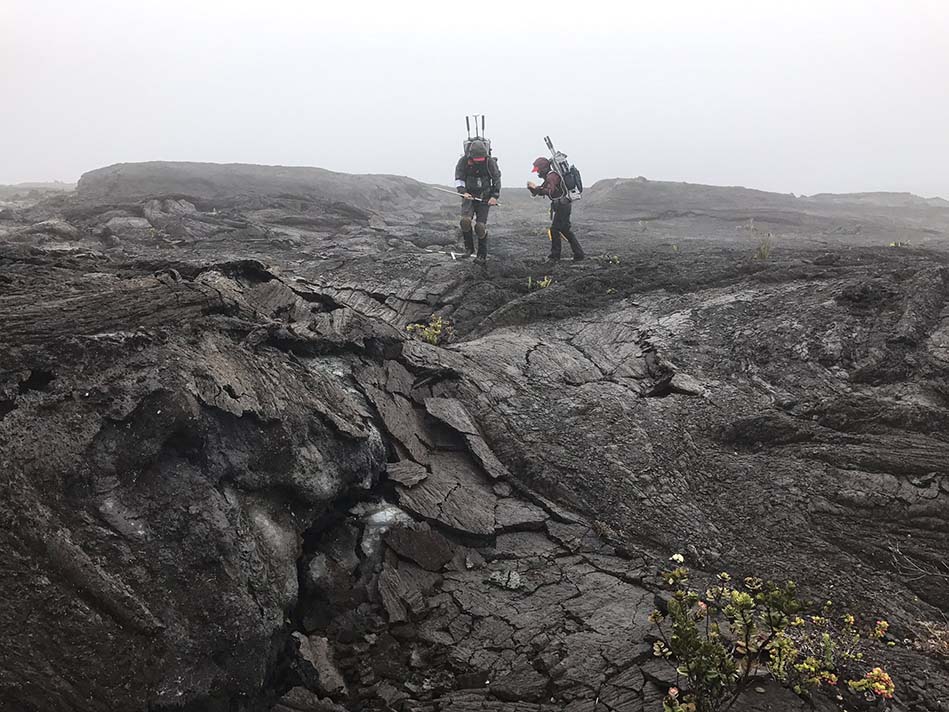Search for clues to life on Mars takes researchers to Hawaii

Two 'astronauts' with their communication packs, starting biogeological surveys and sampling.
BY Michelle Donovan
November 9, 2016
The rugged terrain of Hawaii’s Kilauea volcano – an active and relatively young volcano located along the southern shores of the big island—may provide some important clues in the ongoing search for life on Mars.
A team of researchers, which includes scientists from the School of Geography & Earth Sciences, NASA and others, will be in the region over the next two weeks to mine and analyze its famous black, fine-grained rock, known as basalt.
The McMaster team, led by Greg Slater, is investigating organic biomarkers of microbial life associated with the rocks.
“Mars has a lot of basaltic rocks. If we can determine where biomarkers are most likely to occur in such rocks, we can develop a strategy for future exploration,” he explains. “We are using similar samples found on Earth to investigate this question.”
The newly-formed rocks at Kilauea resemble the conditions of Mars billions of years ago, when it was actively volcanic and may have had liquid water. Earlier this year, researchers gathered samples from craters found in Craters of the Moon National Park in Idaho, which contains basalt rocks exposed on the surface for very long periods of time and similar to those found on Mars today.
Active fumarole right behind them. Sulfur dioxide protection masks ready if needed. @BASALT_Research pic.twitter.com/Sx3QELRBbU
— Chris Intagliata (@cintagliata) November 8, 2016
By comparing and contrasting the weathered and unweathered samples, researchers hope to identify where evidence of life is most likely to exist and what type of evidence that might be. Their conclusions could provide valuable information for future missions to Mars.
“The goal of this project is to develop our understanding of where might be the best places to look for evidence of life on Mars,” says Allyson Brady, a post doctoral fellow working on the project. “Rovers can only cover certain ranges and terrains. Humans can only cover certain amounts of ground. Analysis on Mars itself would be limited and if samples are returned back to Earth for analysis, only a relatively small amount is likely to be transported back.”
While on site, researchers are also testing what communications and protocols are most effective when astronauts do finally go to Mars. For instance, what happens when an astronaut is collecting rock samples in very extreme, dangerous conditions and there is a 15-minute communications delay with the team back on Earth?
NASA scientists will mimic the communications challenges that would be faced in space as team members – or ‘astronauts’ in this scenario – gather samples, are tracked in the field and are directed to certain targets.
“Being able to effectively achieve science, while limited by logistics, is going to be key. We are working to gain new insights,” says Slater.


